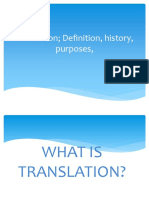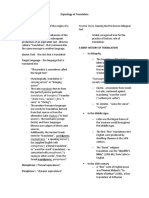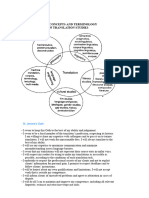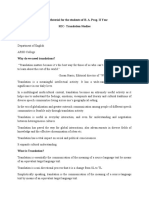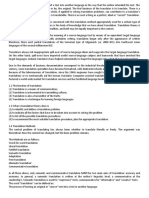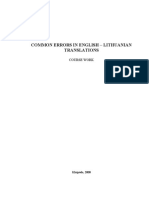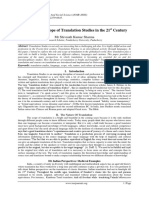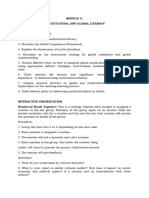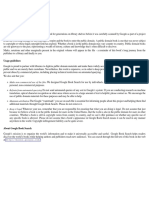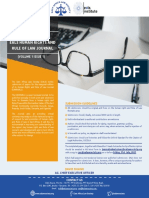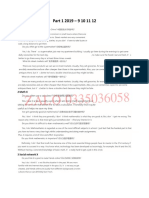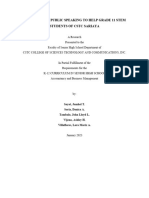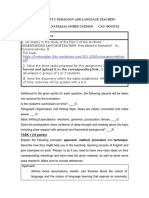0% found this document useful (0 votes)
35 views20 pagesLecture 1
Translation is the process of transferring meaning from one language to another, involving cultural communication and understanding. It encompasses various definitions and concepts, including source and target texts, equivalence, and the role of the translator. The discipline has evolved significantly over time, influenced by historical events, technological advancements, and the globalization of the economy.
Uploaded by
layanalharbi0508Copyright
© © All Rights Reserved
We take content rights seriously. If you suspect this is your content, claim it here.
Available Formats
Download as PPTX, PDF, TXT or read online on Scribd
0% found this document useful (0 votes)
35 views20 pagesLecture 1
Translation is the process of transferring meaning from one language to another, involving cultural communication and understanding. It encompasses various definitions and concepts, including source and target texts, equivalence, and the role of the translator. The discipline has evolved significantly over time, influenced by historical events, technological advancements, and the globalization of the economy.
Uploaded by
layanalharbi0508Copyright
© © All Rights Reserved
We take content rights seriously. If you suspect this is your content, claim it here.
Available Formats
Download as PPTX, PDF, TXT or read online on Scribd
/ 20















